The Life and Work of Marie Curie – IELTS Reading Answers
6 min read
Updated On
-
Copy link
Table of Contents

Limited-Time Offer : Access a FREE 10-Day IELTS Study Plan!
The Academic passage ‘The Life and Work of Marie Curie’ is a reading passage that appeared in an IELTS Test.
Ideally, you should not spend more than 20 minutes on a passage. Let’s see how easy this passage is for you and if you’re able to make it in 20 minutes. If not, try more IELTS reading practice tests from IELTSMaterial.com
The Life and Work of Marie Curie

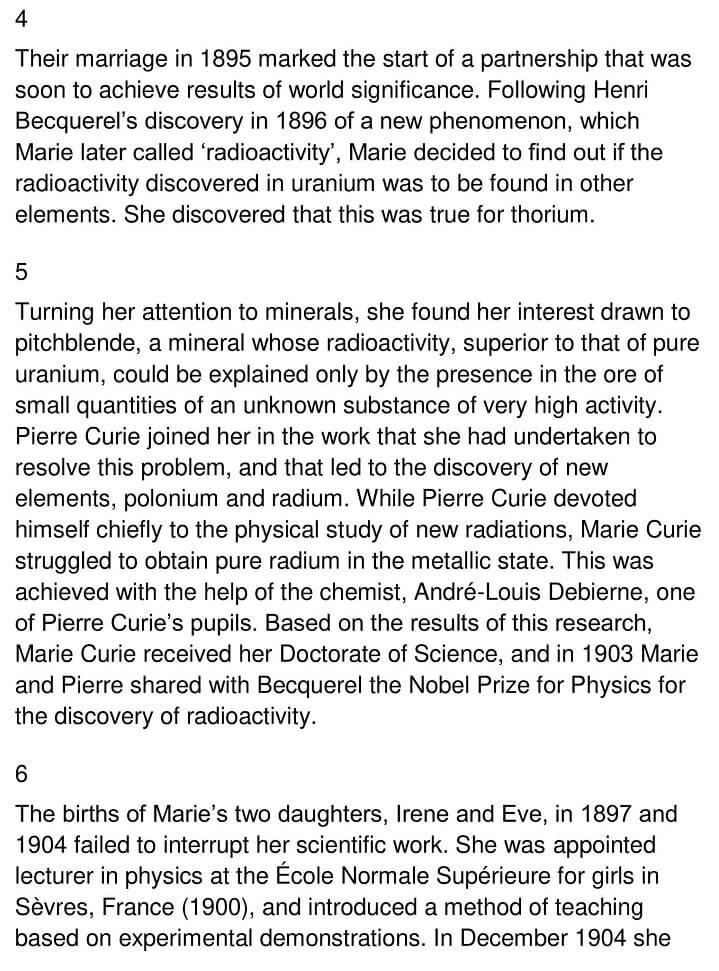
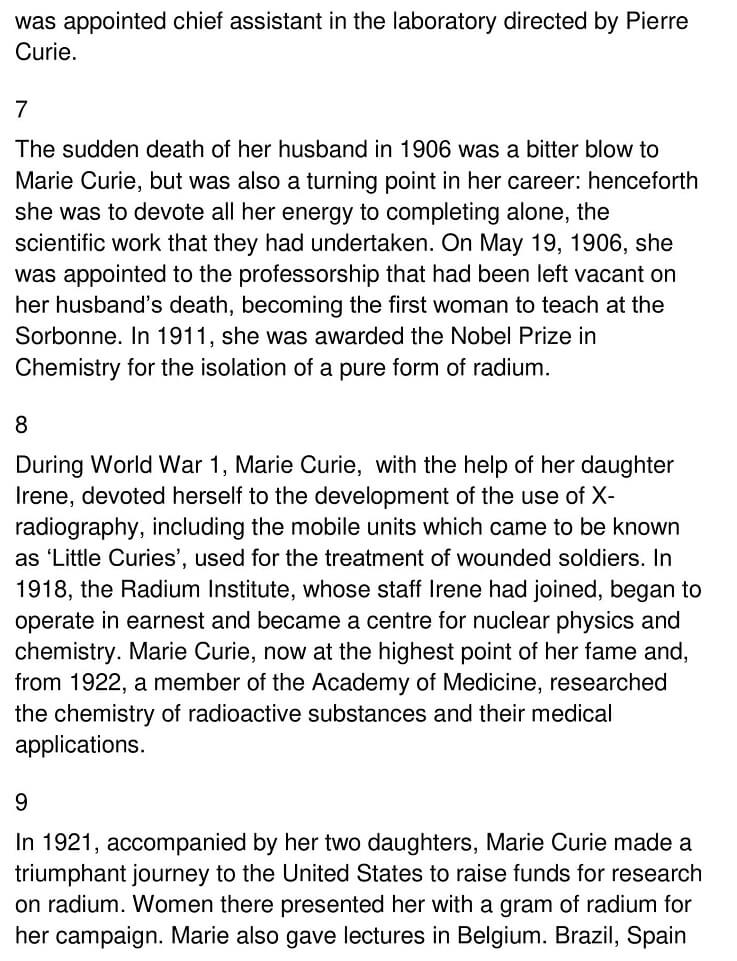
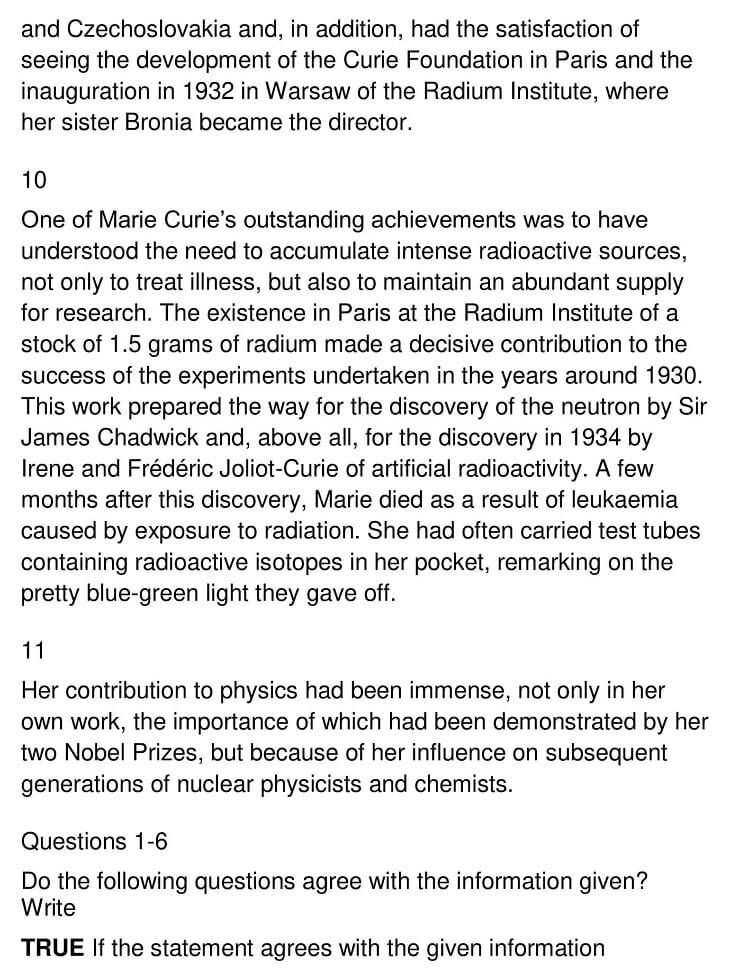
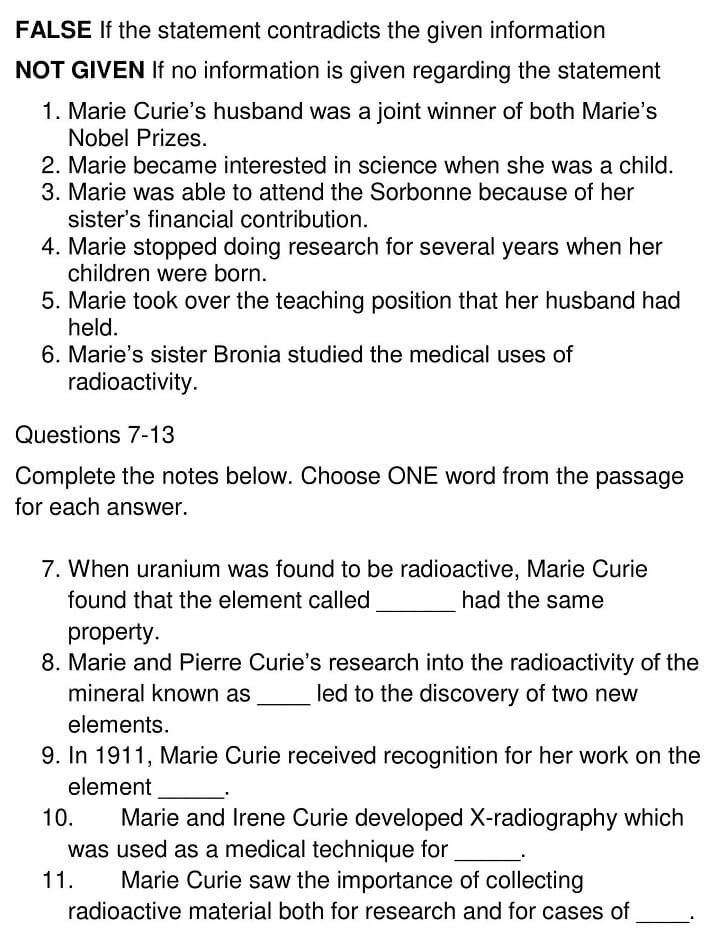

Answers
Unlock Answers
| Question Number | Answer | Explanation |
|---|---|---|
| 1 | FALSE | In the first paragraph, the writer mentions that Marie Curie shared the 1903 Nobel Prize for Physics with her husband, Pierre Curie, and Henri Becquerel. Later, in 1911, she became the sole winner (did not share with anyone, not even her husband) of the 1911 Nobel Prize for Chemistry. As the statement contradicts the information given in the passage. Hence, the answer is FALSE. |
| 2 | NOT GIVEN | The first sentence of paragraph 2 states that from childhood, Marie was remarkable for her prodigious memory, and at the age of 16 won a gold medal on completion of her secondary education. As there is no reference of Marie Curie being interested in science when she was a child, the answer is NOT GIVEN. |
| 3 | TRUE | At the end of paragraph 2, the writer points out that Marie was able to finance her sister Bronia’s medical studies in Paris, on the understanding that Bronia would, in turn, later help her to get an education. This means that in the beginning Marie helped her sister financially for education and she knew that her sister’s education would help her someday. In the first sentence of paragraph 3, the writer continues that in 1891 the promise of help was fulfilled and Marie went to Paris and began to study at the Sorbonne (the University of Paris). As the statement agrees with the information, the answer is TRUE. |
| 4 | FALSE | The first sentence of paragraph 6 mentions that The births of Marie’s two daughters, Irène and Eve, in 1897 and 1904 failed to interrupt her scientific work. The statement – Marie stopped researching for several years when her children were born – contradicts the information given in the text. Hence, the answer is FALSE. |
| 5 | TRUE | In paragraph 7, the author informs that the sudden death of her husband in 1906 was a bitter blow to Marie Curie, but was also a turning point in her career. But it also created an opportunity for her as on May 13, 1906, she was appointed to the professorship that had been left vacant on her husband’s death and became the first woman to teach at the Sorbonne. This is paraphrased in the statement as “Marie took over the teaching position her husband had held.” Hence the answer is TRUE. |
| 6 | NOT GIVEN | In paragraph 2, it is given that when Marie’s father lost his savings through bad investment, she then had to take work as a teacher. From her earnings she was able to finance her sister Bronia’s medical studies in Paris. As there is no reference to the fact whether Marie’s sister’s medical study was related to uses of radioactivity, the answer is NOT GIVEN. |
| 7 | Thorium | In paragraph 4, the writer mentions, ” Marie Curie decided to find out if the radioactivity discovered in uranium was to be found in other elements. She discovered that this was true for thorium.” This meant that when Marie was following her husband’s discovery of the radioactivity property in uranium, Marie Curie noted that the element called thorium had the same property. Hence, the answer is ‘thorium’. |
| 8 | Pitchblende | In paragraph 5, the writer brings out the fact that when MArie turned her attention to minerals, she found her interest drawn to pitchblende, a mineral whose radioactivity is superior to that of pure uranium. It could be explained only by the presence in the ore of small quantities of an unknown substance of very high activity. Pierre Curie (her husband) joined her in the work that she had undertaken to resolve this problem, and that led to the discovery of the new elements, polonium and radium. As a result, we can conclude that Marie and Pierre Curie’s research into the radioactivity of the mineral pitchblende led to the discovery of two new elements, polonium and radium. Hence the answer is ‘pitchblende’. |
| 9 | Radium | The last sentence of paragraph 7 brings out the fact that in 1911 Marie was awarded the Nobel Prize for Chemistry (received recognition) for the isolation of a pure form of radium, which was her work related to radium.Hence, the answer is ‘radium’. |
| 10 | Soldiers | Paragraph 8 informs that during World War I, Marie Curie, with the help of her daughter Irène, devoted herself to the development of the use of X-radiography which was used for the treatment (medical technique) of wounded soldiers. Here, ‘medical technique’ has the meaning ‘treatment’. Hence, the answer is ‘soldiers’. |
| 11 | Illness | Paragraph 10 indicates that one of Marie Curie’s outstanding achievements was to have understood the need to accumulate intense radioactive sources, not only to treat illness but also to maintain an abundant supply for research. So, she saw the importance of collecting radioactive material both for research and for cases of illness. Hence the answer is ‘illness’. |
| 12 | Neutron | Paragraph 10 points that the existence of a stock of 1.5 grams of radium (radioactive material stocked) in Paris at the Radium Institute made a decisive contribution (contributed to) to the success of the experiments undertaken in the years around 1930 (1930s). As a result, it led to the discovery of the neutron, otherwise known as artificial radioactivity, by Sir James Chadwick. Hence, the answer is ‘neutrons’. |
| 13 | Leukaemia | In paragraph 10, the author mentions that Marie Curie died due to leukaemia caused by exposure to radiation during her research. Hence, the answer is ‘leukaemia’. |
Check More IELTS Reading Answers
Also check :
- IELTS Reading
- True False Not Given IELTS Reading
- IELTS Reading recent actual test
- IELTS Reading tips
- IELTS Academic Reading test papers with answers pdf
Practice IELTS Reading based on question types

Start Preparing for IELTS: Get Your 10-Day Study Plan Today!
Recent Articles

Nehasri Ravishenbagam

Haniya Yashfeen

Haniya Yashfeen

Haniya Yashfeen
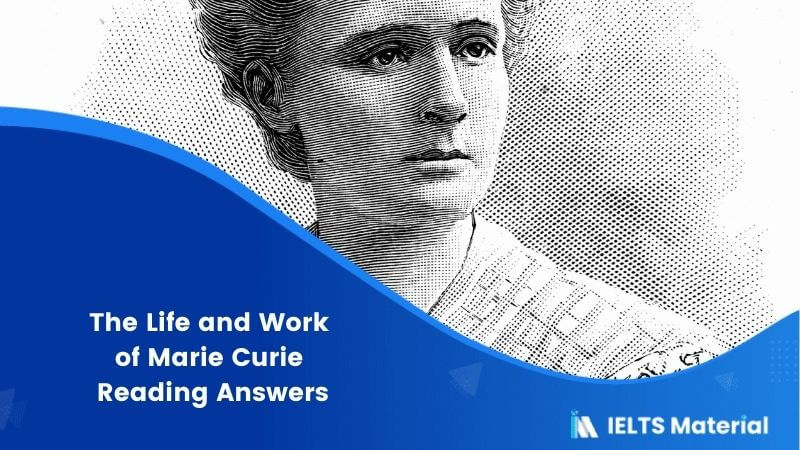



Post your Comments